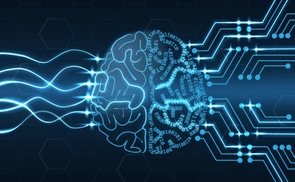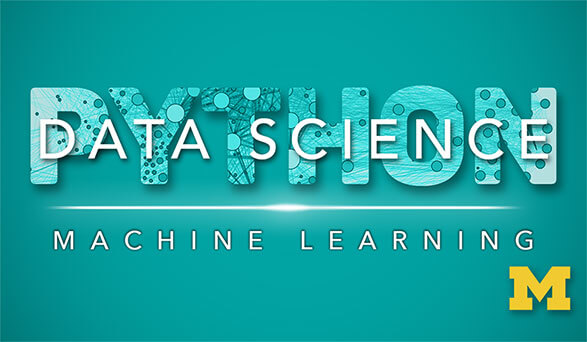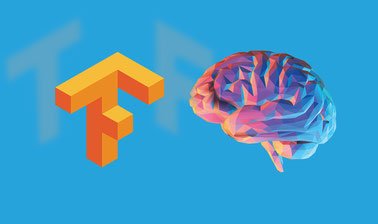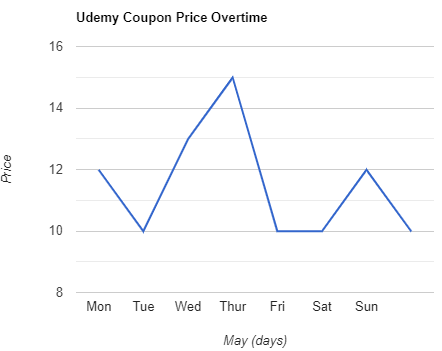Deep Learning with Tensorflow
Much of the world's data is unstructured. Think images, sound, and textual data. Learn how to apply Deep Learning with TensorFlow to this type of data to solve real-world problems.
Created by: Saeed Aghabozorgi
 Quality Score
Quality Score
Content Quality
/
Video Quality
/
Qualified Instructor
/
Course Pace
/
Course Depth & Coverage
/
Overall Score : 0 / 100
 Live Chat with CourseDuck's Co-Founder for Help
Live Chat with CourseDuck's Co-Founder for Help
Need help deciding on a machine learning course? Or looking for more detail on Saeed Aghabozorgi's Deep Learning with Tensorflow? Feel free to chat below.
Join CourseDuck's Online Learning Discord Community
 Course Description
Course Description
Traditional neural networks rely on shallow nets, composed of one input, one hidden layer and one output layer. Deep-learning networks are distinguished from these ordinary neural networks having more hidden layers, or so-called more depth. These kind of nets are capable of discovering hidden structures within unlabeled and unstructured data (i.e. images, sound, and text), which consitutes the vast majority of data in the world.
TensorFlow is one of the best libraries to implement deep learning. TensorFlow is a software library for numerical computation of mathematical expressional, using data flow graphs. Nodes in the graph represent mathematical operations, while the edges represent the multidimensional data arrays (tensors) that flow between them. It was created by Google and tailored for Machine Learning. In fact, it is being widely used to develop solutions with Deep Learning.
In this TensorFlow course, you will learn the basic concepts of TensorFlow, the main functions, operations and the execution pipeline. Starting with a simple Hello Word example, throughout the course you will be able to see how TensorFlow can be used in curve fitting, regression, classification and minimization of error functions. This concept is then explored in the Deep Learning world. You will learn how to apply TensorFlow for backpropagation to tune the weights and biases while the Neural Networks are being trained. Finally, the course covers different types of Deep Architectures, such as Convolutional Networks, Recurrent Networks and Autoencoders.
Module 1 - Introduction to TensorFlow
* HelloWorld with TensorFlow
* Linear Regression
* Nonlinear Regression
* Logistic Regression
Module 2 - Convolutional Neural Networks (CNN)
* CNN Application
* Understanding CNNs
Module 3 - Recurrent Neural Networks (RNN)
* Intro to RNN Model
* Long Short-Term memory (LSTM)
Module 4 - Restricted Boltzmann Machine
* Restricted Boltzmann Machine
* Collaborative Filtering with RBM
Module 5 - Autoencoders
* Introduction to Autoencoders and Applications
* Autoencoders
* Deep Belief Network
TensorFlow is one of the best libraries to implement deep learning. TensorFlow is a software library for numerical computation of mathematical expressional, using data flow graphs. Nodes in the graph represent mathematical operations, while the edges represent the multidimensional data arrays (tensors) that flow between them. It was created by Google and tailored for Machine Learning. In fact, it is being widely used to develop solutions with Deep Learning.
In this TensorFlow course, you will learn the basic concepts of TensorFlow, the main functions, operations and the execution pipeline. Starting with a simple Hello Word example, throughout the course you will be able to see how TensorFlow can be used in curve fitting, regression, classification and minimization of error functions. This concept is then explored in the Deep Learning world. You will learn how to apply TensorFlow for backpropagation to tune the weights and biases while the Neural Networks are being trained. Finally, the course covers different types of Deep Architectures, such as Convolutional Networks, Recurrent Networks and Autoencoders.
Module 1 - Introduction to TensorFlow
* HelloWorld with TensorFlow
* Linear Regression
* Nonlinear Regression
* Logistic Regression
Module 2 - Convolutional Neural Networks (CNN)
* CNN Application
* Understanding CNNs
Module 3 - Recurrent Neural Networks (RNN)
* Intro to RNN Model
* Long Short-Term memory (LSTM)
Module 4 - Restricted Boltzmann Machine
* Restricted Boltzmann Machine
* Collaborative Filtering with RBM
Module 5 - Autoencoders
* Introduction to Autoencoders and Applications
* Autoencoders
* Deep Belief Network
 Instructor Details
Instructor Details

- 0.0 Rating
 0 Reviews
0 Reviews
Saeed Aghabozorgi
Saeed Aghabozorgi, PhD is a Sr. Data Scientist in IBM with a track record of developing enterprise level applications that substantially increases clients' ability to turn data into actionable knowledge. He is a researcher in data mining field and expert in developing advanced analytic methods like machine learning and statistical modelling on large datasets.









